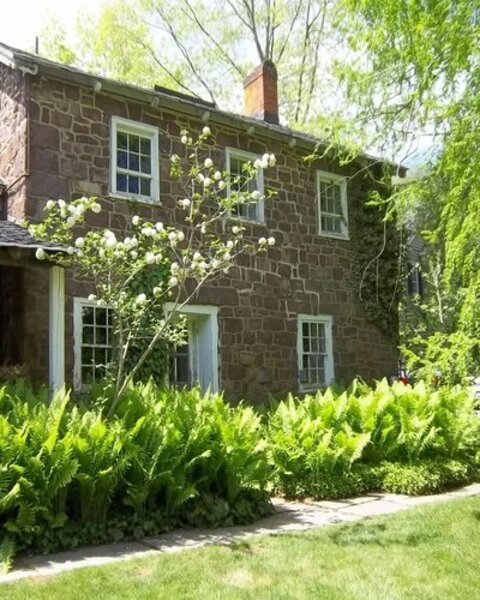A welcoming dooryard garden
Loading...
Looking for something different from the typical foundation plantings, but not interested in becoming an expert gardener? Got a brown thumb? Want something low- or almost-no maintenance?
First, the bad news. There’s no such thing as a no-maintenance garden. And no matter how low-maintenance the garden ultimately becomes, it will still need some help (watering, fertilizer, perhaps some light pruning) during its first few years.
Now the good news. Anyone can create an attractive, soothing front dooryard garden that says, “welcome home,” without draining their brain, their wallet, or their energy.
Go for size
Rule 1: Think big. Some of the most frequent mistakes novice gardeners make are choosing plants that are too small, placing them too far apart, and using too much mulch.
Yes, when you’re down at chipmunk eye level, the plants look bigger and yes, the plants will grow and yes, the mulch makes the beds (temporarily) look tidy. But for the front entry, you want something that looks full and finished, and you want it fast.
Plant en masse
Rule 2: Nothing will kick-start that process quicker than installing large masses of a single plant. Ferns are one deer-resistant choice that can grow in sun or shade (depending on which ones you choose), and offer a wide variety of heights, textures, and shades of green -- from the black-green of the evergreen Christmas fern, Polystichium acrostichroides, to the bright chartreuse of the deciduous hay-scented fern, Dennstaedtia punctilobula .
Combine the ferns with an evergreen ground cover, such as periwinkle (Vinca minor), pachysandra (Pachysandra terminalis), or bugleweed (Ajuga reptans), etc., to serve double duty by covering up the ankles of the ferns in summer and hiding their tatty foliage in winter.
Ground covers are, by nature, aggressive spreaders, so do keep an eye out and trim off the runners before they become invasive. This doesn’t take much time, if it’s done consistently. A word of caution: Thoroughly compost or bag the trimmings for disposal, or you'll find your ground cover sprouting up everywhere.
Folks in warmer climates can achieve the same effect by substituting low-growing succulents, such as sedum or hardy ice plant (Delosperma) for the ground cover and upright, or spiky plants -- such as agave, nolina, or yucca -- for the ferns. The principle is the same: a low carpet interspersed with a medium-size plant that is visually striking.
-----
Lois de Vries, a popular speaker at regional flower shows and garden clubs, writes from her home in rural northwestern New Jersey. To read her other posts at Diggin' It, click here. She's a field editor for Better Homes and Gardens and Country Gardens magazines and has been a contributing editor for other national publications. She was awarded the Jefferson Presidential Award for public service in environmental work. Click here and here to read about her garden design and environmental ideas and her holistic approach to gardening.You can also follow her on Twitter and Facebook.





